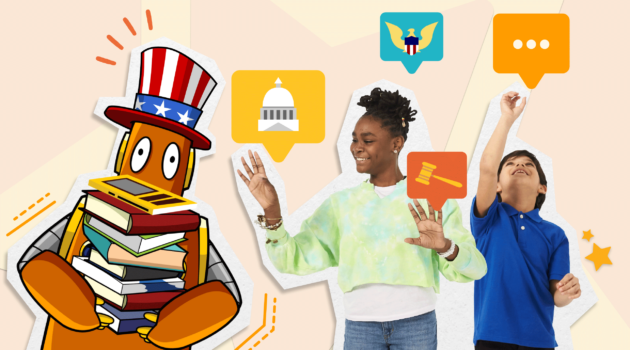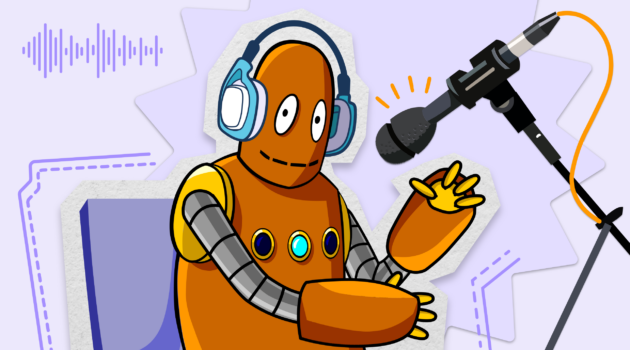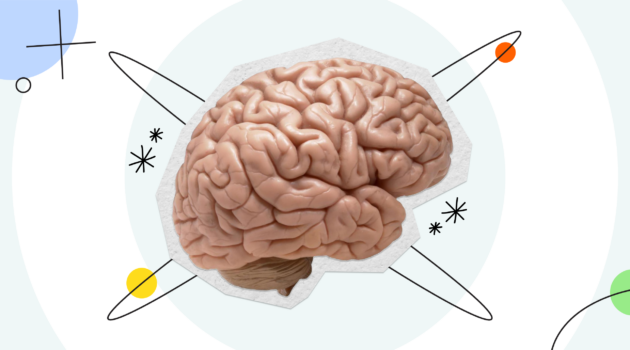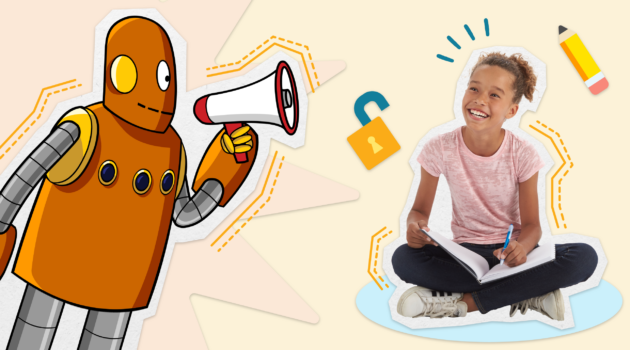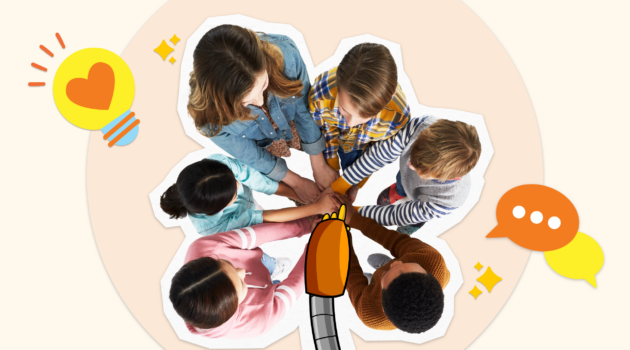Thought Leadership
In the POP Seat with Digital Promise’s Jean-Claude Brizard: “Every Child is a Work of Art. Create a Masterpiece.”
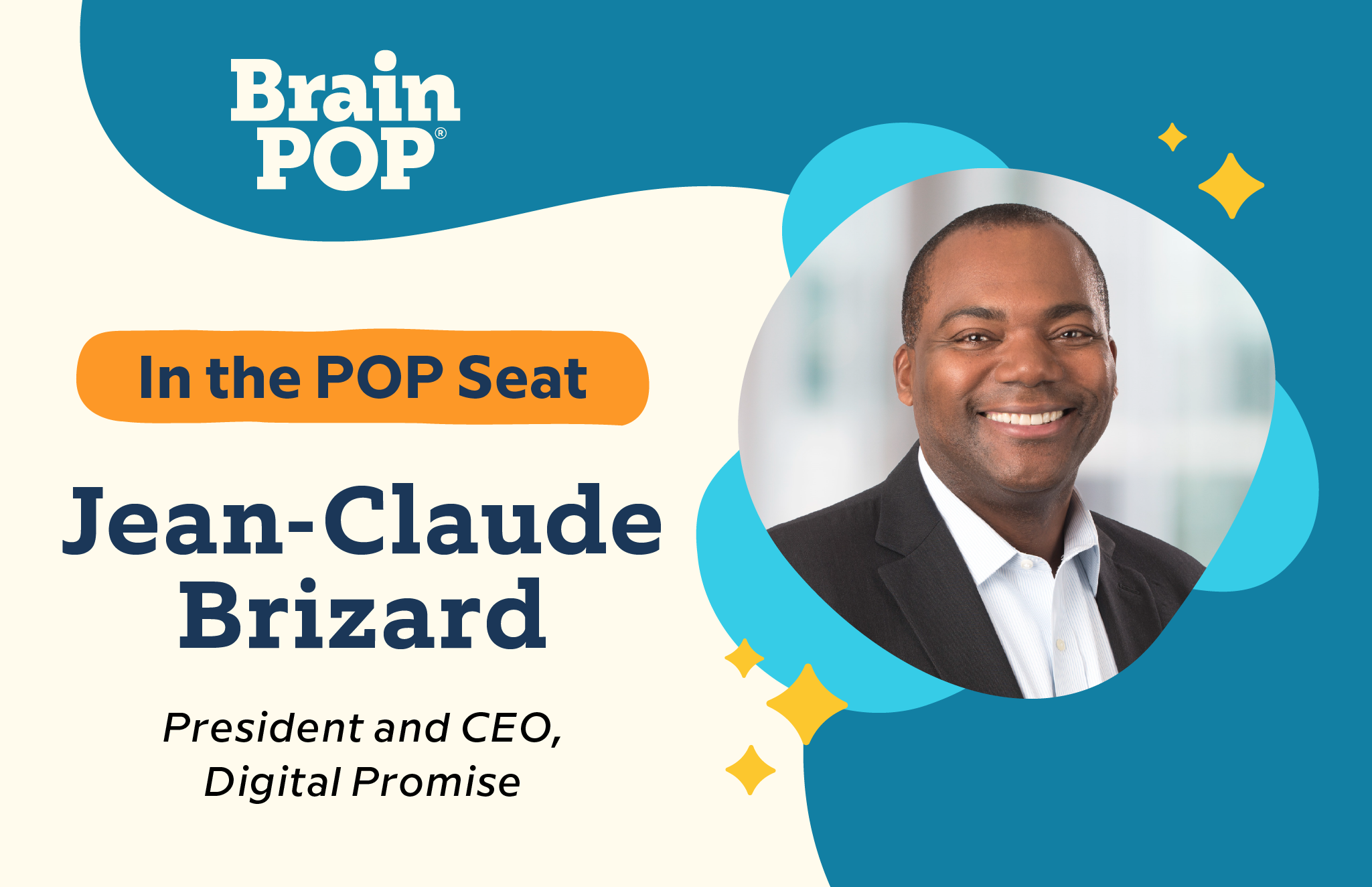
Photo courtesy of Jean-Claude Brizard
Jean-Claude Brizard is optimistic that the definition of “success” is expanding. As president and CEO of nonprofit Digital Promise, whose work accelerates educational innovation with an emphasis on equity and opportunity, Brizard is laser focused on cultivating the full spectrum of human potential. His first classroom experience as a teacher at Rikers Island opened his eyes to the “near-sector work” that impacts education. He has since seen the power of a networked approach to create positive, systemic impact. Brizard’s career spans every level of education: graduating from science teacher to school principal, and later serving as a regional superintendent and executive director with the New York City Department of Education, superintendent of the Rochester City School District, and chief executive of Chicago Public Schools. Still, he reflects, “I keep drawing back on my formative experience as a classroom teacher and a school principal.”
Name: Jean-Claude Brizard
Role & Organization: President and CEO, Digital Promise
Throughout your career, you’ve seen our education system from many vantage points. When you reflect on the biggest challenges and opportunities, how has your perspective evolved?
It really has evolved, I would say, mostly in the last 10–15 years. As a classroom teacher, you see your kids in front of you. I was in New York City, and my five classes of 30, 34 kids—that was my universe. When I became a principal, I really began to understand adult development, that it really was about the teachers. If you take care of the teachers, they’ll take care of the kids. That was the beginning of my reorientation. Probably the best and hardest job I’ve ever had was that of high school principal in New York City.
But I would say, over the last 10 years, my perspective on education has shifted as I have watched my kids grow up. It’s really not about the basics of what so many of us worry about, like math and reading proficiency, for example. Those are critically important, but for many of us it is the goal. I’ve really come to fully understand it is a means to an end: economic security, lifelong well-being, and personal agency. This is why the goals of Digital Promise mirror that.
As a parent, I am playing a long game. I’m thinking about my daughter graduating from college and what she may do after. For my eight-year-old, I have the same kind of understanding. Everything we do is a means to lifelong well-being and happiness.
The second thing I would say, especially as I work in under-resourced communities, is that we have to pay attention to the near-sector work that supports the core work of education, such as health and housing. They are necessary enablers that support the development of a child. This idea of the 360 degree view of a young person, the seven day, 24-hour life cycle, are the things I worry about as I think about the work we do at Digital Promise.
Are we currently chasing the right ends?
Collectively, I think we have not been, but that rhetoric is changing. For example, I am hearing a lot now about the broader definition of success from different people in different organizations and different leadership. I think it’s the right question. This idea of a broader definition of success is now pulling in the academic, cognitive, social-emotional, and neuroscience work that we know is so critical, but with a longer-term trajectory. I hear “workforce” and “access to the future of work” being talked about in K–12 or K–6 conversations. So it is changing, and I’m really gratified to watch the world catching up to where we actually need to be. It’s not just about the workforce. It’s about having economic security, however you define that, and more importantly, frankly, personal agency and well-being.
Civic identity is critical for our collective success. Civic engagement is important, but civic identity—the idea of engaging in a civic process to understand who you are in relation to your community, or the idea of building a good society—is more important for success. When you have a well-informed citizen, that is the goal of a democracy. So, for me, the question is, how do we do that in PreK–16 to make sure that we are focusing on human development and our collective humanity?
We want to empower educators to ask really good questions, and empower and support systems leaders with the tools and solutions they need to create conditions for success.
What essential early building blocks should we focus on to hit that end goal?
When you look at the science of learning and science of development, it paints the picture for you. My wife, who is a cognitive scientist, wrote a paper, “The Building Blocks of Learning,” where she talks about the idea that we have a well-developed set of academic standards, but we need to make sure we understand the full development of a human being.
I have an eight-year-old, and I think about his development. In the school he’s going to, the academics are important, the cognitive development is even more important, but the idea of building him as a citizen of the world is really the focus of the curriculum. When you look at the whole child construct, it is gaining steam in this country, but whole child work is not just a focus on social-emotional learning. It’s academic, cognitive, SEL, identity formation, physical, and mental health.
How does your teaching experience shape your work at Digital Promise?
First and foremost, I taught physics and chemistry at the high school level. I’m going to give you two experiences that have shaped me: One is that I discovered the power of technology in the classroom as a physics teacher, where I was able to bring very complex conceptual challenges in the teaching of physics to kids in Brooklyn, New York. And some of them are now engineers. That was my lightbulb moment: “Oh my god, this can transform teaching and learning if we do it well.”
The other is my first teaching job at Rikers Island in New York City. I was barely 21 at the time, and I had kids in my class who were 19—my age, basically, but on a very different life trajectory. I met a young man who had not been in school since the fifth grade. I was working with him for one semester, and he moved from not being able to do basic computation to pre-algebra in four or five months. Brilliant young man. Society lost a mathematician, in my opinion. When you think about what we did not do collectively to support these young people in those prisons in New York City, you can begin to understand the near-sector challenges of what we don’t do well in education—which is why I often argue we have to have the full understanding of the challenges.
At Digital Promise, we’re focused on the future of learning. We’re big on the idea of augmenting the intelligence of the teaching and learning process, and on applying learning sciences research and the science of development. Our Learner Variability Navigator, for example, talks about the understanding of the “jagged” learning profile of every child and the question of how to actually support every learner. For instance, how do we help teachers understand how sleep deprivation can impact working memory? We want to empower educators to ask really good questions, and empower and support systems leaders with the tools and solutions they need to create conditions for success.
What are your priorities and vision for success at Digital Promise?
We have three impact goals:
- We want at least 30 million young people in the U.S. (and that number will change as we expand our efforts internationally) earning a credential that puts them on a path toward well-being, agency, and economic security. One play in that is rethinking the learner record and credentialing system, developing a regional workforce structure that looks at high school to post-secondary to workforce, and honoring all learning—not just the formal education we see in traditional classrooms.
- The second goal addresses a fundamental problem in education: If you were to take a cohort of kids in any state in America and follow them from third grade through post-secondary, there is massive attrition in the system. In one state, for example, if you take every child who is proficient in the third grade in reading or math, only about 25 percent get a post-secondary degree. For Black, Latino, Native American, and economically disadvantaged kids, it’s closer to 12 percent. But we know it’s a systemic problem. We want at least 30 million young people—though ideally all children—to have access to what we call “powerful learning.” Powerful learning brings in everything we know really works in classroom development, classroom teaching, and changing assessments.
- The last goal is that 75 percent of all systems, especially those serving kids who are most excluded from full participation, will have the tools and solutions they need to create the conditions for success. For us, the research-to-partnership piece—our learning sciences and Learner Variability Project teams, and what they do developing solutions for tech companies and all kinds of for-profit and nonprofit companies—we see as being multipliers, and getting that kind of information out there to the masses.
How can teachers get involved with your work?
Multiple ways. We work closely with teachers in hundreds of school districts, including the 150 districts that are part of the League of Innovative Schools and many more who have been part of our Verizon Innovative Learning Schools program. We offer a number of resources on our website for any teacher who’s interested, including our Learner Variability Navigator and free micro-credentials that can be earned on our Micro-credential Platform.
There are also currently more than 60,000 teachers nationwide who are part of our EdCamp Communities. Visit our website and find out if your district or region has one. Please join, or just email us, and we’ll find another way to connect you.For anyone, please visit the Digital Promise website and sign up for our Action Report newsletter to learn of opportunities.
I’ve always believed that technology should connect and augment the intelligence of the relationship between students, families, educators, and instructional content.
BrainPOP is proud to have received Digital Promise Research-Based Design and Learner Variability certifications. What is the value add of these certifications for districts and educators looking to make informed decisions about products? How do you define success in terms of being able to move the needle for classrooms and students?
We do a lot of this work in collaboration with other groups, like ISTE and InnovateEDU, to make sure we have an industry consortium supporting edtech companies. There are many tech products and tools for teachers and students to choose from, which can feel overwhelming. Much of our work in this space is to help companies demonstrate the efficacy of their products and why districts should purchase them. So, we make a concerted effort in our networks to inform the work of chief technology officers, chief academic officers, superintendents, teachers, and others—especially folks who are buying at the school and district level. Our product certifications represent a curated list of edtech companies and products that we believe are best in class.
That, for us, is the ROI—the biggest value to the consumer is the work we do educating them to be a better consumer of edtech products. BrainPOP is an amazing company, and we’re so glad to see a company like BrainPOP get involved in the certification process. Those who are earning certifications, the ones on the procurement lists, we think their hearts are in the right place and they care about impact. They care about the science and outcomes for kids, and we really believe the best in class should be bought by consumers.
Speaking of which, you recently joined BrainPOP as a board advisor. How do you envision BrainPOP meeting the most pressing needs of educators and students?
I’ve always believed that technology should connect and augment the intelligence of the relationship between students, families, educators, and instructional content. BrainPOP’s use of learning science and learner variability, and the fact that it was originally designed for students and families, makes it a natural fit to accelerate outcomes and support the needs of all learners.
Is there a quote you live by?
Yes, actually, I do, and this is one I coined when I first became a superintendent: “Every child is a work of art. Create a masterpiece.”
It was a bit of a charge to my team that every child brings unique gifts and challenges to us. They are all works of art. You get as individual as possible. Creating a masterpiece means that every child can be powerful. How do you build and help them become their best selves that they could possibly be in the world?
Ilana Kurizki is VP, communications and social impact at BrainPOP.


